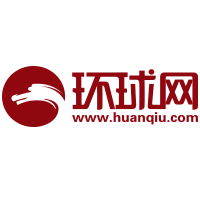
The central processing platform of Phase I of the Kenli 10-2 oilfield, part of the Bohai Sea's billion-ton oilfield group, has been successfully installed using offshore float-over technology, setting a new record in the region for platform size and weight, the Global Times learned on Sunday from the China National Offshore Oil Corp (CNOOC), the project's developer.
The latest milestone is set to lay a solid foundation for boosting reserves and production at the Bohai Oilfield, China's largest crude oil production base, a Chinese expert said.
The platform is a multifunctional offshore structure integrating production and living facilities. Standing 22.8 meters tall with a footprint equivalent to nearly 15 standard basketball courts, it weighs more than 20,000 tons in design, making it the heaviest and largest offshore oil and gas platform in the Bohai Sea, according to a release from CNOOC.
As its weight exceeded the lifting limits of domestic offshore cranes, the construction team employed float-over technology for installation. By utilizing the natural forces of tidal fluctuations, the platform's upper section was precisely installed onto the jacket fixed in the sea, the company said.
Located about 245 kilometers off the coast of North China's Tianjin Municipality in the southern part of the Bohai Sea, the Kenli 10-2 oilfield hosts the largest lithologic oilfield discovered offshore in China to date, with proven geological crude oil reserves exceeding 100 million tons.
To accelerate the transformation of reserves into production, the Kenli 10-2 oilfield is being developed in two phases. With the central processing platform now installed, the overall construction progress of the Phase I development project has surpassed 85 percent, said Jiao Qichao, deputy manager of the project at CNOOC's Tianjin Branch.
"The team will accelerate project construction to ensure production begins within the year," Jiao told the Global Times on Sunday.
Once Phase I of the project is completed, it will support the Bohai Oilfield's goal of achieving an oil and gas production increase to 40 million tons annually, further enhancing energy supply capabilities for the Beijing-Tianjin-Hebei region and the Bohai area, according to CNOOC.
"Maintaining stable and sufficient oil supply is crucial for national energy security. As part of a billion-ton oilfield cluster, the Kenli 10-2 oilfield will further strengthen China's offshore oil and gas resource reserves and help reduce dependence on oil and gas imports," Lin Boqiang, director of the China Center for Energy Economics Research at Xiamen University, told the Global Times on Sunday.
Additionally, the use of artificial intelligence (AI) algorithms and digital technologies became a highlight during the float-over installation of this platform.
Shen Liang, project manager at CNOOC, told the Global Times that the team deployed three BeiDou positioning systems with AI algorithms on the main installation vessel, coupled with multi-tug coordinated maneuvering, achieving single-attempt precision placement. This accomplishment set a new record for large offshore platform float-over installation under complex sea conditions, Shen added.
Technicians also implemented integrated, standardized, and digital solutions to establish a comprehensive quality and safety management system, ensuring the project's safe and high-quality completion on schedule. Jiao stated that the integrated smart production, management, and safety systems have pioneered a new approach for building innovative low-carbon intelligent offshore platforms.
The installation of mega-sized equipment has long been a major challenge in offshore engineering. In recent years, as China has accelerated its push into deep-sea exploration, the country's related equipment and technologies have reached world-class levels, Lin said.
China has completed float-over installations for 50 large offshore platforms, with maximum single-unit capacity reaching 32,000 tons and cumulative float-over weight surpassing 600,000 tons, according to CNOOC. The country has mastered numerous key technologies, ranking among the world leaders in terms of float-over variety, operational difficulty, and technical complexity.

